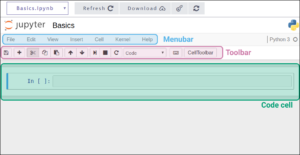
append()
attribute, but the software fails to recognize it. This often happens because the
append()
function is an attribute of pandas series and DataFrames, but not for other objects.
Here is a summary table regarding this error:
| Attribute Name | Description | Solution |
|---|---|---|
| Dataframe Object Has No Attribute Append | The error appears when attempting to use the append() function on an object that does not support it. | Make sure the object you’re calling append() with is a pandas Series or DataFrame. |
Let’s delve deeper into the issue and its resolution.
Pandas DataFrame offers a wide range of flexible tools for data manipulation and analysis. In Python, the DataFrame functions are reliant on the correct application. More specifically, if the operation supposed to be carried out is not inherent of the specific object being treated as a DataFrame, then a resultant error can arise.
When the message ‘DataFrame’ object has no attribute ‘append’, it essentially means that Pandas has failed to identify the dataframe object due to the incorrect utilization. The most probable cause of this error lies in an attempt to use the
append()
method in an inappropriate condition, most likely where Python could not locate this attribute in the given object.
Please note that in Pandas, the
append()
function is used to add rows at the end of the existing DataFrame.
Here is an example demonstrating the proper application:
data1 = {'A': [1, 2], 'B': [3, 4]}
df1 = pd.DataFrame(data1)
data2 = {'A': [5, 6], 'B': [7, 8]}
df2 = pd.DataFrame(data2)
df = df1.append(df2)
This code initializes two different DataFrames df1 and df2, and then uses the append() function correctly to merge them into a single DataFrame df.
So, in case you encounter an error stating “DataFrame object has no attribute append”, this suggests that the DataFrame was not recognized and you should make sure that the object you’re applying the append() function to is indeed a pandas DataFrame or Series. This will rectify the aforementioned error and provide you with the desired appended DataFrame.The DataFrame is a crucial object in the Python programming library called Pandas. This two-dimensional data structure allows for diverse and flexible data manipulation, with an assistive ability to categorize and label data in rows and columns.
One popular technique used in handling DataFrame objects involves extending its contents using an operation similar to appending data. Despite the availability of numerous methods designed to manipulate data contained within DataFrames, such as
concat()
,
merge()
, and
join()
, it’s worth noting that the DataFrame object has no attribute ‘append’.
Attempting to use the
append()
function will typically raise an AttributeError: `’DataFrame’ object has no attribute ‘append’`. In essence, this error occurs because the
append()
operation isn’t directly applicable to DataFrame objects. For instance, executing the following code would yield an error:
df = pd.DataFrame({'A': [1,2,3], 'B': [4,5,6]})
df.append({'A': 4, 'B': 7})
The correct way to add data into a DataFrame is through functions such as
.loc[]
or alternatively, using
.at[]
. Here’s how you accomplish this using
loc[]
:
df.loc[len(df.index)] = {'A': 4, 'B': 7}
In this line of code,
len(df.index)
provides the last index in your DataFrame. Then, you’re essentially placing at the end of the DataFrame a new row, ‘
{'A': 4, 'B': 7}
‘, using the loc accessor.
Despite not having the
append()
attribute, pandas DataFrame offers diverse functionality in managing, manipulating, and cleaning datasets. Further documentation on using and understanding pandas DataFrame can be found in the official Pandas Documentation and a variety of online resources, aiding all levels of coders from novice programmers to advanced users in effectively performing complex data analysis tasks.
In Python’s pandas library, a DataFrame is a crucial data structure, akin to a two-dimensional array or a table with rows and columns. It’s a powerful tool for handling large datasets, fostering easy manipulation, aggregation, merging, and reshaping of data.
However, even a skilled coder like you might encounter an error message such as “DataFrame object has no attribute ‘append'” while working with pandas.
The problem here is that the append method does not exist in pandas DataFrame. What actually exists is the append function. This might seem confusing but functions in python are first-class objects which means you can assign them to variables, store them in data structures, pass them as arguments to other functions, and even return them as values from other functions. However, methods in python are somewhat different, they are associated with object instances whereas a function is not.
So when you get an AttributeError about ‘append’, it means you’re attempting to use a method when you should be using a function. Therefore, instead of:
df1.append = df2
You should write:
df1 = df1.append(df2)
You can view this as appending the data in df2 onto df1. The new DataFrame df1 now comprises of old df1 appended with df2.
Notice the difference between the two lines of code: we called the append() function on the df1 DataFrame object and then assigned the result back to df1. In trying to assign df2 directly to the append attribute of df1, the former line of code was flawed.
Another point worth noting, in pandas, operations on DataFrames usually return new instances rather than mutating the original instance. Hence the need to reassign the return value of the append operation to df1.
Moving further, it’s also important to remember that append() does not modify the existing DataFrame. Instead, it creates a new one that combines the two. If you wish to add to the existing DataFrame, consider using concat() or merge().
Here is a source code example demonstrating how to correctly use the append function:
import pandas as pd
# create two simple dataframes
df1 = pd.DataFrame({
'A': ['A0', 'A1', 'A2', 'A3'],
'B': ['B0', 'B1', 'B2', 'B3'],
'C': ['C0', 'C1', 'C2', 'C3'],
})
df2 = pd.DataFrame({
'A': ['A4', 'A5', 'A6', 'A7'],
'B': ['B4', 'B5', 'B6', 'B7'],
'C': ['C4', 'C5', 'C6', 'C7']
})
# append df2 to df1 and assign the result to df1
df1 = df1.append(df2, ignore_index=True)
print(df1)
This misunderstanding with the append function shows how vital it is to have a deep understanding of the libraries we use, especially those critical ones like pandas. With proper mastery, common stumbling blocks become avenues to solidify our knowledge and raise our prowess in Python coding.
When you’re working with the Python’s Pandas library, one of the most common data structures you’ll come across is a DataFrame. Think of it as a cross between a list and a dictionary – multidimensional, and it can include mixed data types.
Although DataFrame objects are mutable, meaning their contents can be modified directly, one might run into challenges especially when trying to use methods or attributes that don’t exist for DataFrame objects. One such misunderstanding frequently occurs in connection with the .append() attribute.
In Python lists, .append() is used to add an element at the end of the list. However, unlike lists, pandas’ DataFrame objects do not have an .append() attribute. This is because the process of appending rows in DataFrame uses .append() method. This is a common issue faced by those programmers who switch from using lists to Pandas due to their somewhat similar look and feel.
Consider the example below:
The correct way to append data to your DataFrame would be like this:
df = pd.DataFrame({'A': ['foo', 'bar', 'baz'],
'B': [1,2,3]})
df2 = pd.DataFrame({'A': ['qux', 'quux'],
'B': [4,5]})
df = df.append(df2)
If you try to use .append as an attribute like so:
df = df.append['newData']
, Python will prompt an AttributeError since .append() is a method rather than an attribute in DataFrame.
A good way to avoid these type of errors is being aware of the structures and methods in the respective libraries. Part of the learning process involves understanding the unique properties of Pandas, including the fact that a DataFrame object does not have an .append attribute, but instead an .append() method. Reading through the official Pandas documentation on merging, joining, and concatenating could provide additional good-to-know aspects of DataFrames.
So why does this distinction matter? Well, knowing that .append() is a method and not an attribute is important since it requires calling syntax with parentheses. Also knowing its parameters allows us to use more flexible usage patterns. Ultimately, understanding and using appropriate data structure’s methods and attributes is foundational as you write code, debug issues, and create robust and effective algorithms.
Sure thing!
It seems like you might be running into an issue quite common to many coders: trying to use the
append()
method with a DataFrame object and getting an error message saying “DataFrame object has no attribute ‘append'”. This could possibly be because one might be confused about the semantics of different programming languages.
In Python, especially with a popular data manipulation library, Pandas, the
append()
function plays an integral role. In pandas, append() is used to concatenate rows from another DataFrame or Series at the end of the original one, returning a fresh object.
So, if you’re planning on adding more rows to your existing DataFrame, using
append()
would be a correct way to go about it under usual circumstances. For instance:
import pandas as pd
# Creating two DataFrames
df1 = pd.DataFrame({'A': ['A0', 'A1', 'A2', 'A3'],
'B': ['B0', 'B1', 'B2', 'B3'],
'C': ['C0', 'C1', 'C2', 'C3'],
'D': ['D0', 'D1', 'D2', 'D3']})
df2 = pd.DataFrame({'A': ['A4', 'A5', 'A6', 'A7'],
'B': ['B4', 'B5', 'B6', 'B7'],
'C': ['C4', 'C5', 'C6', 'C7'],
'D': ['D4', 'D5', 'D6', 'D7']})
# Appending df2 at the end of df1
result = df1.append(df2)
In this example, we initially create two separate DataFrames df1 and df2 with the same columns but different values. We then append df2 to df1 with the
.append()
method, and store the new, concatenated DataFrame in the ‘result’ variable.
Now let’s move forward with why you’re encountering the “DataFrame object has no attribute ‘append'” problem. It’s most likely because you’re trying to use
append()
directly on a DataFrame that doesn’t exist or hasn’t been properly defined yet. A snippet of code triggering this could be as follows:
# Trying to append to a non-existing DataFrame non_existing_df.append(df1)
To fix this error, make sure to execute
append()
only on an existing, valid DataFrame. And also remember to always add the other DataFrame (the ‘to-be-appended’) as a parameter inside the brackets of
append()
.
Lastly, do note that
append()
does not modify the original DataFrame. Instead, it returns a new DataFrame that is composed of the original one and whatever you want to append. Be sure to store this newly returned value to maintain the updated DataFrame.It’s entirely possible you may have encountered an error message like
Dataframe Object Has No Attribute 'Append'
. Often, this error emerges because there could potentially be some confusion regarding how data manipulation in pandas works. Fear not, as there are alternative options when you’re unable to use the ‘append’ function on DataFrames.
The
concat
,
merge
, and
join
functions provide practical alternatives for appending DataFrames. They are part of the pandas library, which is a robust open-source data analysis and manipulation tool built on Python.
Let’s delve into these alternatives more specifically:
1. concat():
Concatenate pandas objects along a particular axis via
pd.concat()
.
Here is an example:
import pandas as pd
df1 = pd.DataFrame({'A': ['A0', 'A1', 'A2', 'A3'],
'B': ['B0', 'B1', 'B2', 'B3'],
'C': ['C0', 'C1', 'C2', 'C3'],
'D': ['D0', 'D1', 'D2', 'D3']})
df2 = pd.DataFrame({'A': ['A4', 'A5', 'A6', 'A7'],
'B': ['B4', 'B5', 'B6', 'B7'],
'C': ['C4', 'C5', 'C6', 'C7'],
'D': ['D4', 'D5', 'D6', 'D7']})
result = pd.concat([df1, df2])
Also, consider that many-to-one or many-to-many joins with duplicate keys will create Cartesian product if you concatenate along axis=0.
2. merge():
Merge DataFrame objects by performing a database-style join operation by either columns or indexes.
For instance:
left = pd.DataFrame({'key': ['K0', 'K1', 'K2', 'K3'],
'A': ['A0', 'A1', 'A2', 'A3'],
'B': ['B0', 'B1', 'B2', 'B3']})
right = pd.DataFrame({'key': ['K0', 'K1', 'K2', 'K3'],
'C': ['C0', 'C1', 'C2', 'C3'],
'D': ['D0', 'D1', 'D2', 'D3']})
result = pd.merge(left, right, on='key')
3. join():
Join columns with another DataFrame possibly on a key or a multi-index.
For example:
left = pd.DataFrame({'A': ['A0', 'A1', 'A2'],
'B': ['B0', 'B1', 'B2']},
index=['K0', 'K1', 'K2'])
right = pd.DataFrame({'C': ['C0', 'C1', 'C2'],
'D': ['D0', 'D1', 'D2']},
index=['K0', 'K2', 'K3'])
result = left.join(right)
Remember that while dealing with larger datasets, you will need to consider the speed and efficiency of the operation. So, pick your method wisely.
You may refer to the official documentation of Pandas to know more about these methods and how to leverage them effectively when facing issues with the append attribute.If you’re working with pandas dataframes and Python, you might have already seen an ‘AttributeError’ in your workflow. This type of error could come up in some instances which involve usage of functions or methods that do not exist for a given object. Specifically, you might have encountered this error if you tried to use the
append
attribute on a dataframe object.
The error message would typically look like this:
AttributeError: 'DataFrame' object has no attribute 'append'
The above error basically signals that ‘append’ is not a valid function or attribute associated with a DataFrame object in pandas. This could potentially result from confusion between list append and DataFrame’s append.
Let’s elaborate on the proper usage:
In Python, the
append()
function is widely used for adding elements to a list, as shown below:
list_example = []
list_example.append("element")
However, DataFrame in pandas holds its unique way to append rows called
append()
. The primary difference is this, it doesn’t alter the original DataFrame but creates a new one. A simple usage of DataFrame’s
append
function is like so:
import pandas as pd
df1 = pd.DataFrame({"A": ["A0", "A1"]})
df2 = pd.DataFrame({"A": ["A2", "A3"]})
df3 = df1.append(df2)
In the context, you would use
append
with DataFrame objects correctly through method call. Thus, the correct way to use append functionality with DataFrame is like: `dataframe1.append(dataframe2)`. It worth noting the new dataframe must have similar structure (columns).
Still having `AttributeError` after making sure you’ve used append function correctly? That surely might be because pandas hasn’t been imported into your code or perhaps there’s typo issue with pandas syntax.
For instance if you have mistakenly typed:
dff1.appen(dff2)
You’ll get AttributeError since
appen
is not recognized as an attribute for DataFrame. Spend extra minute to ensure you have done it right! ‘Append()‘ function should meet your need perfectly and help you avoid boring ‘AttributeError’.
Think about ‘AttributeError’ as your smart assistant giving you hint whenever you are taking wrong steps. Despite being frustrating at times, learning to decode error messages is a crucial skill in programming that aids you to debug effectively.Sure, let’s dive right into troubleshooting this common error associated with using dataframes in Python’s pandas library.
When you run into an error message stating ‘Dataframe object has no attribute append’, it typically means that there’s been a misunderstanding of the nature and functioning of the dataframe object in pandas. To be clear, this error implies that you are trying to use the
append
command as though your dataframe is something else – like a list or another type of mutable sequence in Python. It’s crucial to remember:
- Pandas DataFrames comprise two-dimensional labeled data structures with columns that may hold different types (integer, string, float, etc.). They are mutable in size and tabular in nature, which makes them superb for working on real data analyses.
- The ‘
append
‘ method in Python functions well with lists but doesn’t directly apply to Pandas dataframes. While pandas does provide an
append
function, it does not update the original DataFrame but rather returns a new one which includes the appended rows/columns. Always remember to assign the appended result back to a variable.
In order to rectify the ‘Dataframe Object Has No Attribute Append’ error, instead of attempting to use the append attribute with the dataframe object, leverage the built-in pandas dataframe functions, more accurately the
concat()
or
append()
.
Here’s how you would use
concat()
:
import pandas as pd
#Create the initial dataframe
df1 = pd.DataFrame({'A': ['A0', 'A1', 'A2'],
'B': ['B0', 'B1', 'B2'],
})
# Create the second dataframe
df2 = pd.DataFrame({'A': ['A3', 'A4', 'A5'],
'B': ['B3', 'B4', 'B5'],
})
# Concatenate the dataframes
df3 = pd.concat([df1, df2])
Alternatively, you can also use
append()
, as shown below:
df3 = df1.append(df2)
Just note that, unlike list’s
append()
, the pandas
append()
does not modify df1. Instead, it creates a new dataframe that combines the data. That’s why we reassigned the output to df3.
Make sure you are not attempting to use the method on a series object or any other non-dataframe object. Remember, each function and method in pandas applies to specific object types so being precise about handling these operations helps eliminate errors aside from the ‘Dataframe Object Has No Attribute Append’.
Besides, don’t miss out on capitalizing on the official Pandas Documentation. This comprehensive guide gives you detailed insights and examples that allow you to go deeper into the specific methods or functions within the Pandas library that can help avoid such errors.
Despite the fact that Pandas DataFrame is a powerful tool for data manipulation, it doesn’t possess an inbuilt
append
attribute. When you encounter an error message like “Dataframe object has no attribute ‘append'” it means trying to implement the
append()
method on a DataFrame object in a manner that resembles applying it on a list. Interestingly, a DataFrame does not support this method the way lists do.
Here’s how what this misunderstanding might look like:
df = pd.DataFrame()
df = df.append{‘A’: 1, ‘B’: 2}
In the case of a DataFrame, the
.append
method is used to add rows at the end of the DataFrame. It requires another DataFrame or compatible data structure as an argument. The common practice is to create a DataFrame with new rows as such and then append it to the existing DataFrame. Here is an example of how to use the
append
method appropriately:
df1 = pd.DataFrame({‘A’: [1, 2], ‘B’: [3, 4]})
df2 = pd.DataFrame({‘A’: [5], ‘B’: [6]})
df1 = df1.append(df2)
It is also worth noting that the pandas’ DataFrame object possesses a host of features and capabilities that includes but is not limited to merging, joining, group-by capabilities, adjusting and reshaping your dataset. If you are looking for an operation similar to appending in lists, you could consider using the
concat()
or
join()
functions depending on your specific need.
Should you want to widen your knowledge about handling and manipulating data with Pandas, take a look at the Pandas Documentation. Every coder will tell you that the official documentation of any library or framework is always a priceless resource when dealing with new functionalities or troubleshooting errors.
Finally, always remember that encountering errors is an everyday part of coding life. With every challenge comes an opportunity to learn something new, become more proficient, and ultimately be a better coder. After all, as much as we try to avoid them, these bugs and problems are stepping stones propelling us towards mastering our chosen languages and tools. Happy coding!













